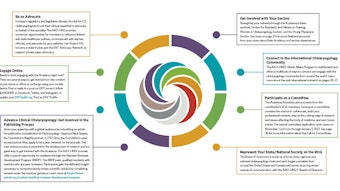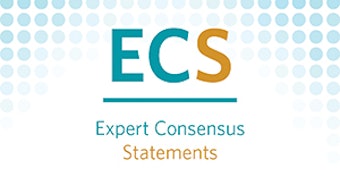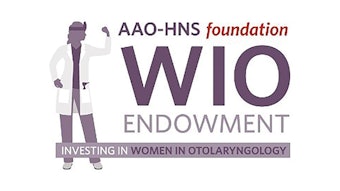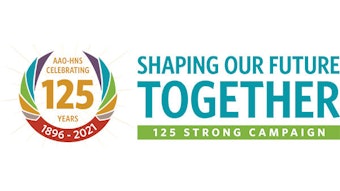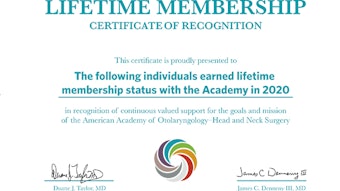Out of Committee: Outcomes Research and Evidence-Based Medicine; Is Dupilumab the Answer to the Prayers of the Chronic Rhinosinusitis Patient?
In this Bulletin segment, our committee shares highlights from recent key research in otolaryngology-head and neck surgery. We offer concise summaries of significant findings that may alter current surgical practice.
Nikhila P. Raol, MD, MPH; Edward D. McCoul, MD, MPH; Elisabeth Ference, MD; George A. Scangas, MD; Vikas Mehta, MD; and Michael J. Brenner, MD
In this Bulletin segment, our committee shares highlights from recent key research in otolaryngology-head and neck surgery. We offer concise summaries of significant findings that may alter current surgical practice. For this issue, we address the study by Bachert et al., “Efficacy and Safety of Dupilumab in Patients with Severe Chronic Rhinosinusitis with Nasal Polyps (LIBERTY NP SINUS-24 And LIBERTY NP SINUS-52): Results from Two Multicentre, Randomised, Double-Blind, Placebo-Controlled, Parallel-Group Phase 3 Trials.”1

The LIBERTY NP SINUS-24 and LIBERTY NP SINUS-52 are highlighted in this segment. The studies are parallel-group prospective, placebo-controlled, double-blinded randomized Phase 3 trials that examine the safety and efficacy of dupilumab for treatment of chronic rhinosinusitis with nasal polyps (CRSwNP). Dupilumab is a fully human VelocImmune-derived monoclonal antibody that inhibits signaling by the cytokines IL-4 and IL-13, which drive type 2 inflammation. Prior to these studies, existing literature has established that CRSwNP is a disease mediated primarily by type 2 inflammation, associated with a high disease burden and poor quality of life. Dupilumab, also known by the brand name Dupixent, has been demonstrated to be effective in moderate to severe atopic dermatitis and asthma in adults and adolescents. In addition, a prior Phase 2 proof-of-concept study of dupilumab for patients with CRSwNP demonstrated significant decrease in nasal polyposis.
SINUS-24 was conducted in 67 clinical centers across 13 countries, while SINUS-52 was conducted in 117 clinical centers in 14 countries. Eligible patients were aged 18 years or older with bilateral nasal polyposis and symptoms of chronic rhinosinusitis despite intranasal corticosteroid therapy before randomization. Participants had received systemic corticosteroids in the preceding two years (or had a medical contraindication or intolerance to systemic corticosteroids) or previous sinonasal surgery. In addition, at the time of evaluation, patients had to have at least two out of three nasal symptoms at a moderate-to-severe level: nasal congestion/obstruction, loss of smell, and nasal drainage. A nasal polyp score (NPS) of at least five on an eight-point scale, with a minimum score of two on each side (translating to polyps extending below the inferior border of the middle turbinate), was required as determined by in-office nasal endoscopy. Subgroups of patients with asthma, NSAID-exacerbated respiratory disease, or a history of surgery were included, while those with an FEV1 of 50% or less or prior participation in a dupilumab studies were excluded.
In the SINUS-24 study, patients were randomized in a 1:1 fashion to dupilumab 300 mg every two weeks or to placebo for 24 weeks. In SINUS-52, patients were randomized to one of three groups in a 1:1:1 fashion: dupilumab 300 mg every two weeks for 52 weeks, dupilumab 300 mg every two weeks for 24 weeks followed by dupilumab 300 mg every four weeks for 28 weeks, or placebo for 52 weeks. In addition, the studies permitted use of saline nasal lavage, systemic antibiotics, short-course systemic corticosteroids, or sinonasal surgery during the treatment and follow-up periods. Randomization was stratified by subgroup status as described above and by country.
Primary endpoints in both studies were change in the endoscopic NPS and nasal congestion severity at week 24. Secondary endpoints were change in Lund-Mackay CT score at week 24, patient-reported total symptom score, daily loss or decrease in sense of smell, SNOT-22 score, and UPSIT smell test. In addition, for the SINUS-52 cohorts, changes at week 52 in NPS, nasal congestion, and SNOT-22 score were recorded.
A total of 276 patients (SINUS-24) and 448 patients (SINUS-52) were enrolled in the studies. In the SINUS-24 study 143 patients were assigned to the dupilumab arm. In the SINUS-52 study, 150 patients received dupilumab every two weeks, and 145 patients received dupilumab every two weeks until week 24 and every four weeks until week 52. Discontinuation rate was low and primarily occurred due to adverse events. Demographics were balanced across treatment groups in both studies.
NPS and patient-reported nasal congestion scores were both significantly improved in both studies at week 24 in the dupilumab groups compared with placebo, and this improvement was observed across all designated subgroups. Notably, with respect to NPS, a modest, yet significant, two-point reduction was observed in both studies. Additionally, patients in both dupilumab arms of the SINUS-52 study had continued progressive improvement through 52 weeks, while those in the dupilumab arm of the SINUS-24 study had worsening of symptoms after discontinuation of the medication at 24 weeks.
Lund-Mackay CT scores showed significant improvement in both studies across all subgroups, and improvement in SNOT-22 scores was greater than the minimal clinically important difference of 8.9 points. Rates of anosmia based on the UPSIT score decreased from 74% to 24% in the SINUS-24 study and 79% to 30% in the SINUS-52 study. In the SINUS-52 study, those who continued the dupilumab dosing at every two weeks had greater continued improvement that those who switched to every four weeks. With regards to adjuvant treatments of systemic corticosteroids and sinonasal surgery, the hazard ratios for these treatments in the dupilumab group compared to placebo decreased by 74% for systemic corticosteroids and 83% for surgery.
Adverse events, which included nasopharyngitis, worsening nasal polyps, headache, worsening of asthma, epistaxis, and injection-site erythema were more common in the placebo group in SINUS-24. In SINUS-52, the dupilumab group had slightly higher incidences of cough, bronchitis, arthralgia, accidental overdose, and injection-site reactions.
The results of these two double-blinded randomized controlled trials demonstrate that in patients with CRSwNP, dupilumab has the potential to improve physical examination and imaging-based objective outcomes and patient-reported subjective outcomes in a specific patient population. Both primary and secondary endpoints demonstrated significant improvement on the treatment, and this treatment effect appeared to be mitigated when the therapy was discontinued. While these results are very encouraging, there are limitations that should be considered.
As mentioned by the authors, the full treatment effect cannot be determined due to the end of the study period occurring at 52 weeks. In addition, it has become clear that categorizing chronic rhinosinusitis only in the context of the presence and absence of nasal polyps is inadequate, with various other phenotypes being described, such as central compartment atopic disease and allergic fungal sinusitis. Even more specificity is achievable by characterizing endotypes of CRS, as defined by distinct pathophysiologic features, cellular and molecular biomarkers, and differential treatment responses.2 Lastly, because patients were allowed to have oral corticosteroids and/or sinonasal surgery during the study period, various site investigators may have had different thresholds for these adjuvant therapies. Nevertheless, the drug does appear to be effective in the properly selected patient.
In the resource-constrained U.S. healthcare system, the comparative benefits and costs of various treatments for CRSwNP should be considered. In a recently published cost-utility analysis, a cohort of 197 CRSwNP patients who underwent endoscopic sinus surgery was compared with a matched cohort of 293 CRSwNP patients from the SINUS-24 and SINUS-52 Phase 3 studies who underwent treatment with dupilumab 300 mg every two weeks. The study, which included a rigorous sensitivity analysis, concluded that endoscopic sinus surgery was more cost-effective than dupilumab for upfront treatment of CRSwNP. Thus, until endotypes of this disease are better characterized and linked to clinical outcomes, prognostication and selection of treatment options will remain challenging.
When considering use of dupilumab in patients, otolaryngologists should be careful to characterize the precise endotype and select appropriate patients who might benefit from use of this medication.
References
- Bachert C, Han JK, Desrosiers M, et al. Efficacy and safety of dupilumab in patients with severe chronic rhinosinusitis with nasal polyps (LIBERTY NP SINUS-24 and LIBERTY NP SINUS-52): results from two multicentre, randomised, double-blind, placebo-controlled, parallel-group phase 3 trials. Lancet. 2019;394(10209):1638-1650. doi: 10.1016/S0140-6736(19)31881-1
- Akdis CA, Bachert C, Cingi C, et al. Endotypes and phenotypes of chronic rhinosinusitis: a PRACTALL document of the European Academy of Allergy and Clinical Immunology and the American Academy of Allergy, Asthma & Immunology. J Allergy Clin Immunol. 2013;131(6):1479-1490. doi:10.1016/j.jaci.2013.02.036






